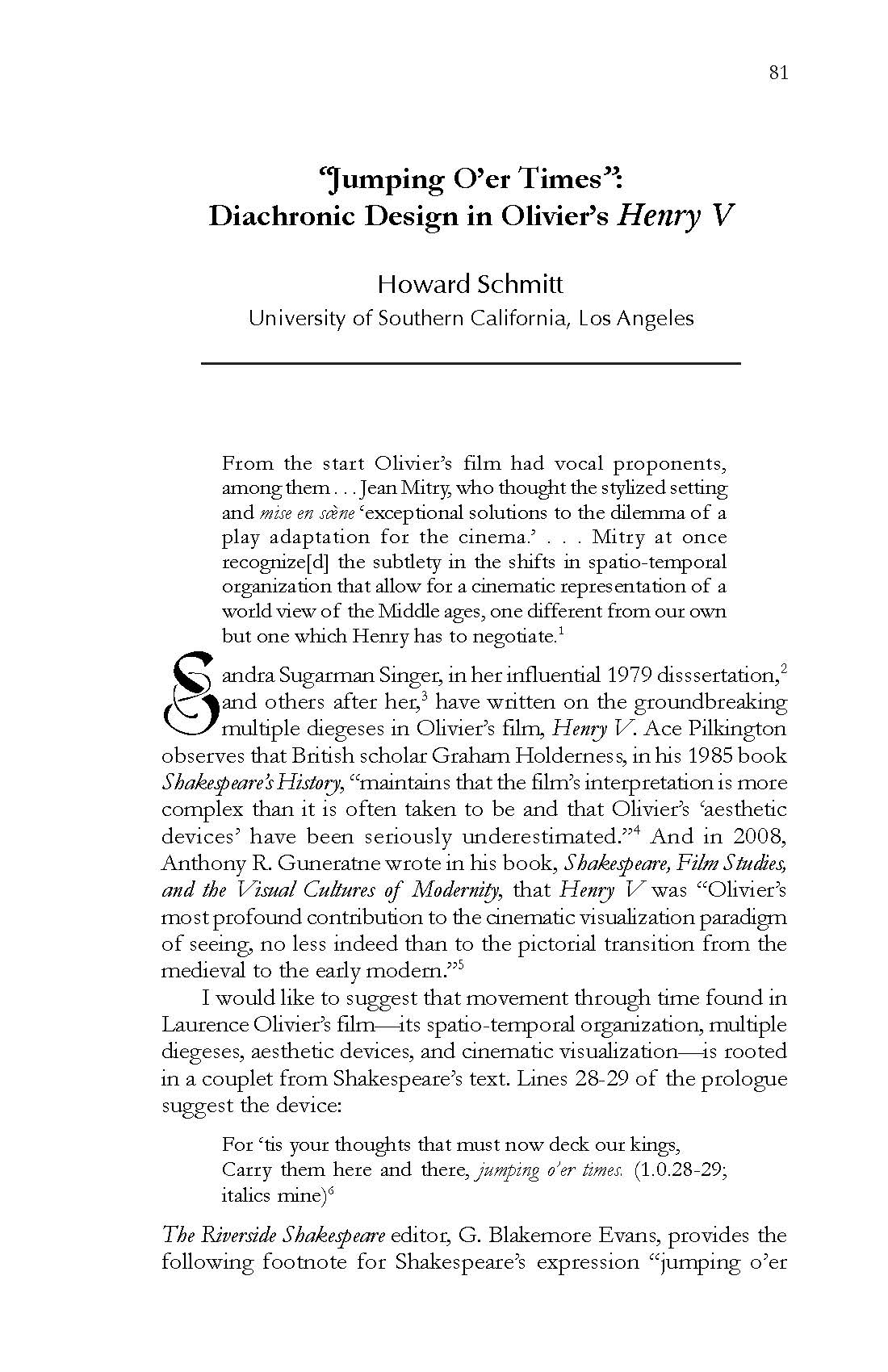“Jumping O’er Times”: Diachronic Design in Olivier’s Henry V
Main Article Content
Abstract
Sandra Sugarman Singer, in her influential 1979 disssertation,2 and others after her,3 have written on the groundbreaking multiple diegeses in Olivier’s film, Henry V. Ace Pilkington observes that British scholar Graham Holderness, in his 1985 book Shakespeare’s History, “maintains that the film’s interpretation is more complex than it is often taken to be and that Olivier’s ‘aesthetic devices’ have been seriously underestimated.”4 And in 2008, Anthony R. Guneratne wrote in his book, Shakespeare, Film Studies, and the Visual Cultures of Modernity, that Henry V was “Olivier’s most profound contribution to the cinematic visualization paradigm of seeing, no less indeed than to the pictorial transition from the medieval to the early modern.”5
Article Details
Section
Articles
